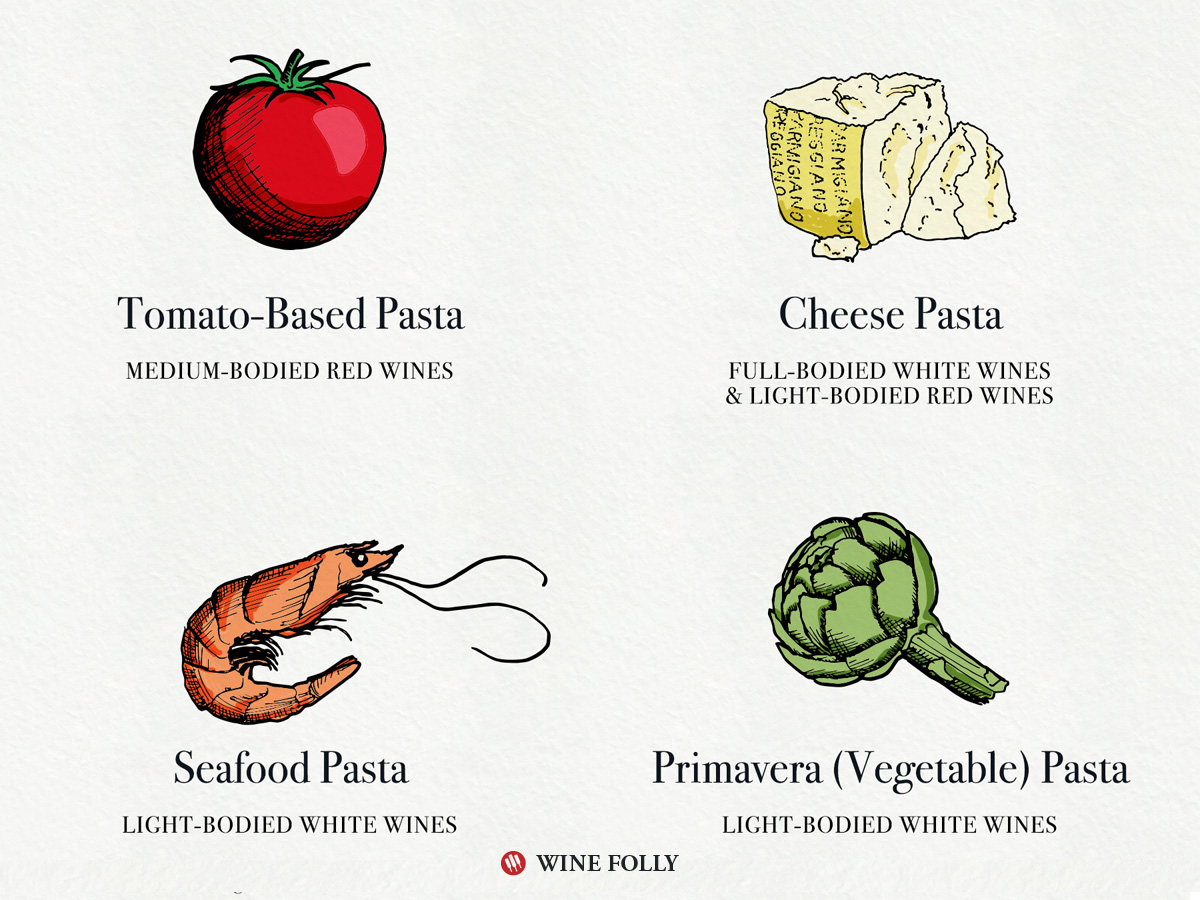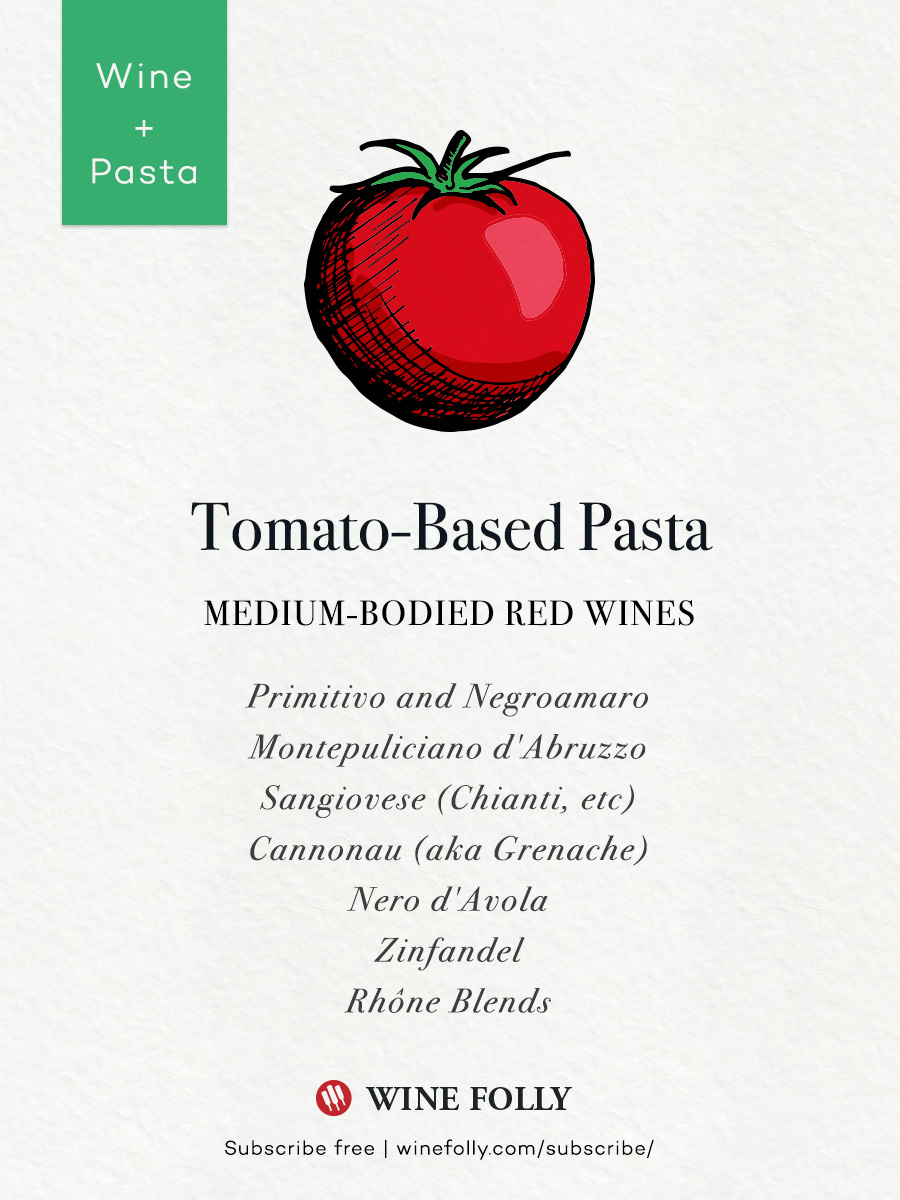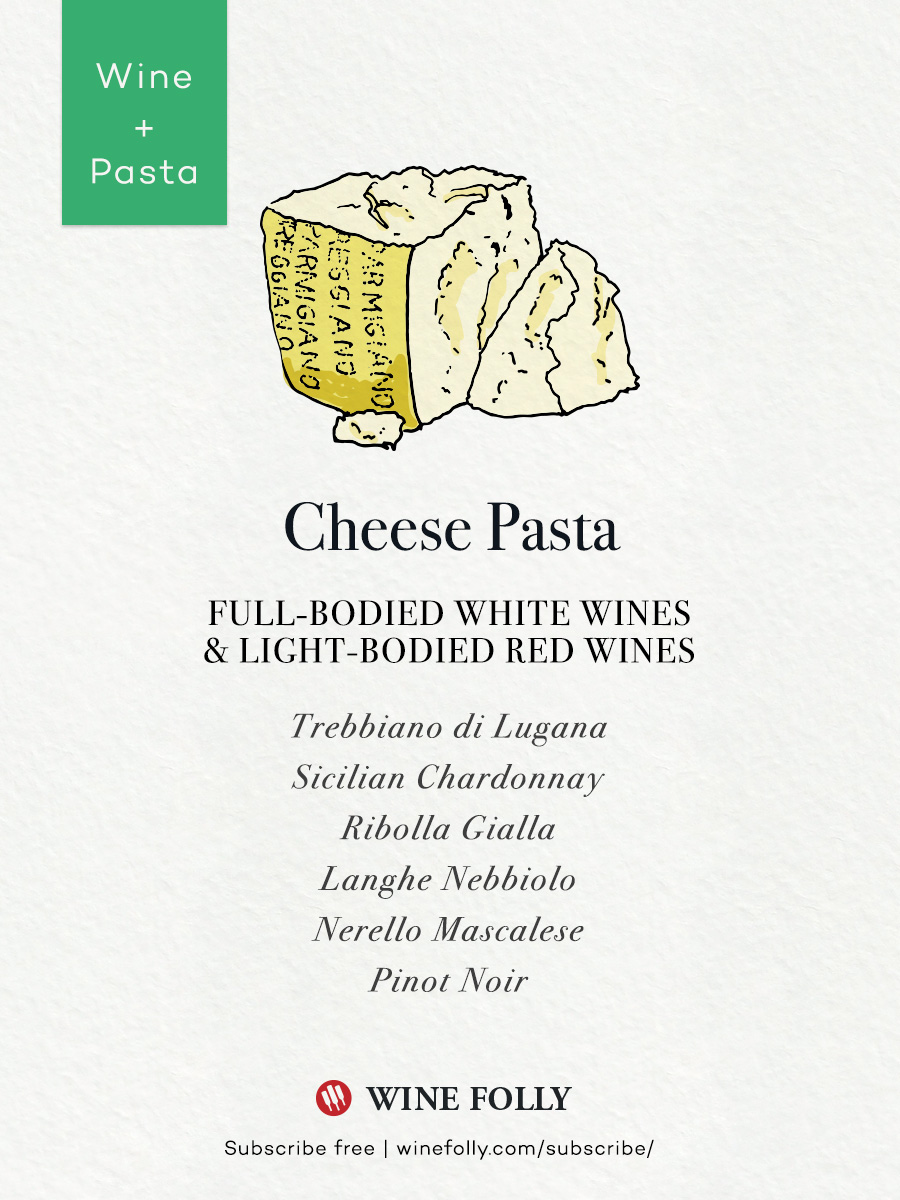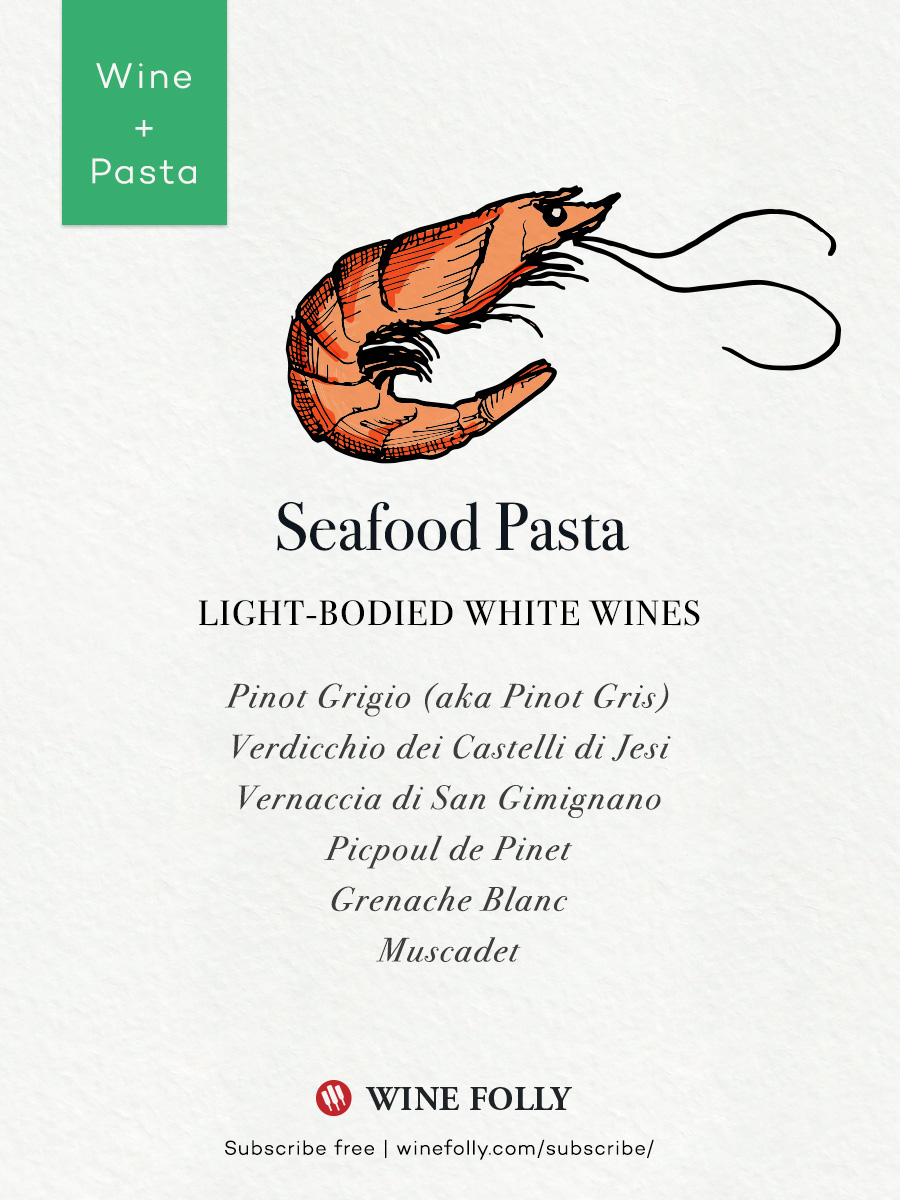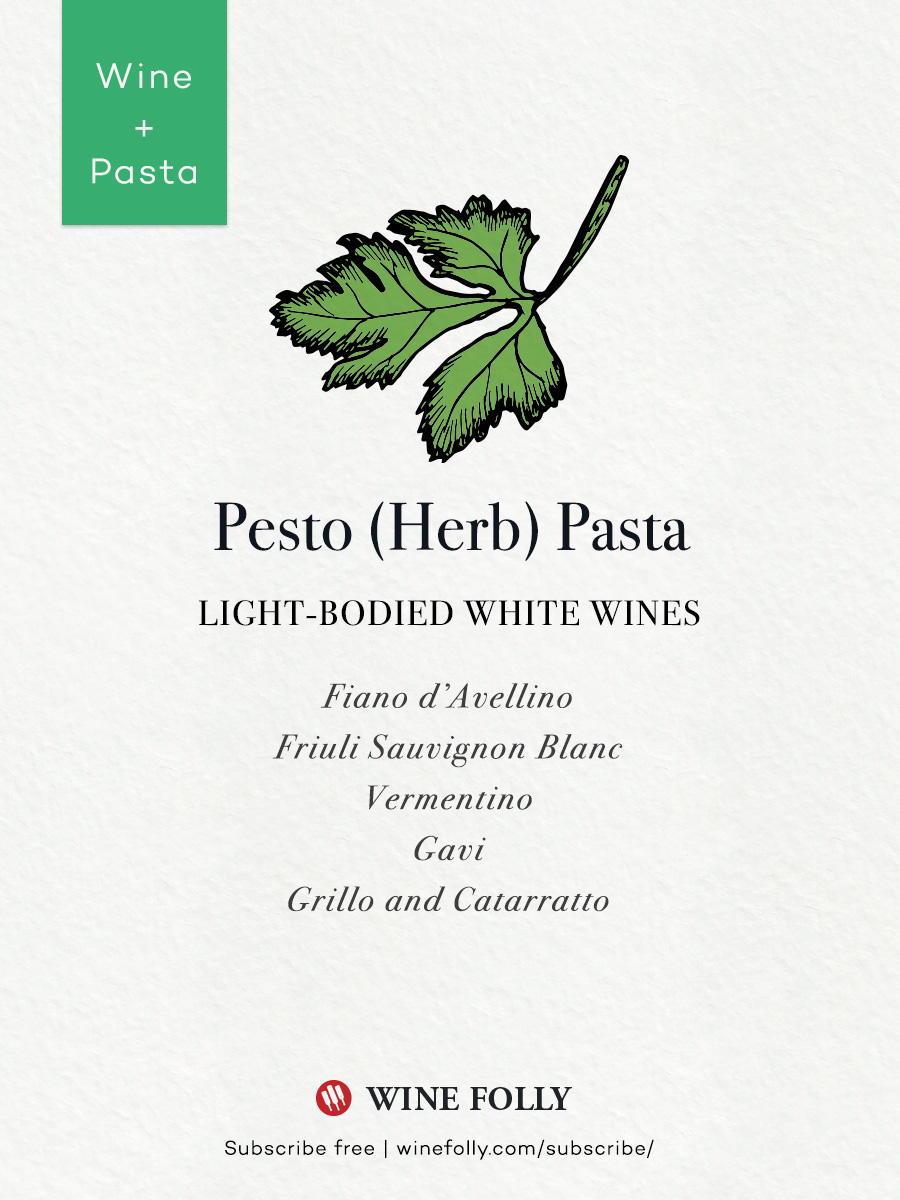Wine and pasta are as inseparable as cheese and crackers, but pairing the right bottle with the right dish can elevate a weeknight dinner into a true Italian feast. The best tip for pairing wine with pasta is to focus on the sauce rather than the pasta itself.
Pasta itself is neutral, a blank canvas. The magic comes from the sauce, and understanding its flavors is the trick to picking a wine that complements, rather than competes with, your meal.
Take, for example, the Apulian specialty rigatoni ragù barese, a rustic, meaty tomato-based dish. A wine pairing with enough structure and depth will balance the roasted tomato and red meat, bringing out the best in every bite.
On Pairing Wine With Pasta
In this guide, we’ll explore five popular pasta styles — vegetable-forward, tomato-based, cheese, seafood, and pesto — and show you which wines pair best with each.
We’re not suggesting this is the only way you could enjoy these wines or pastas, just one way. Many roads lead to Rome, as it were. And, hey, there’s only one way to find out. Start popping bottles!
Primavera (Vegetable) Pasta
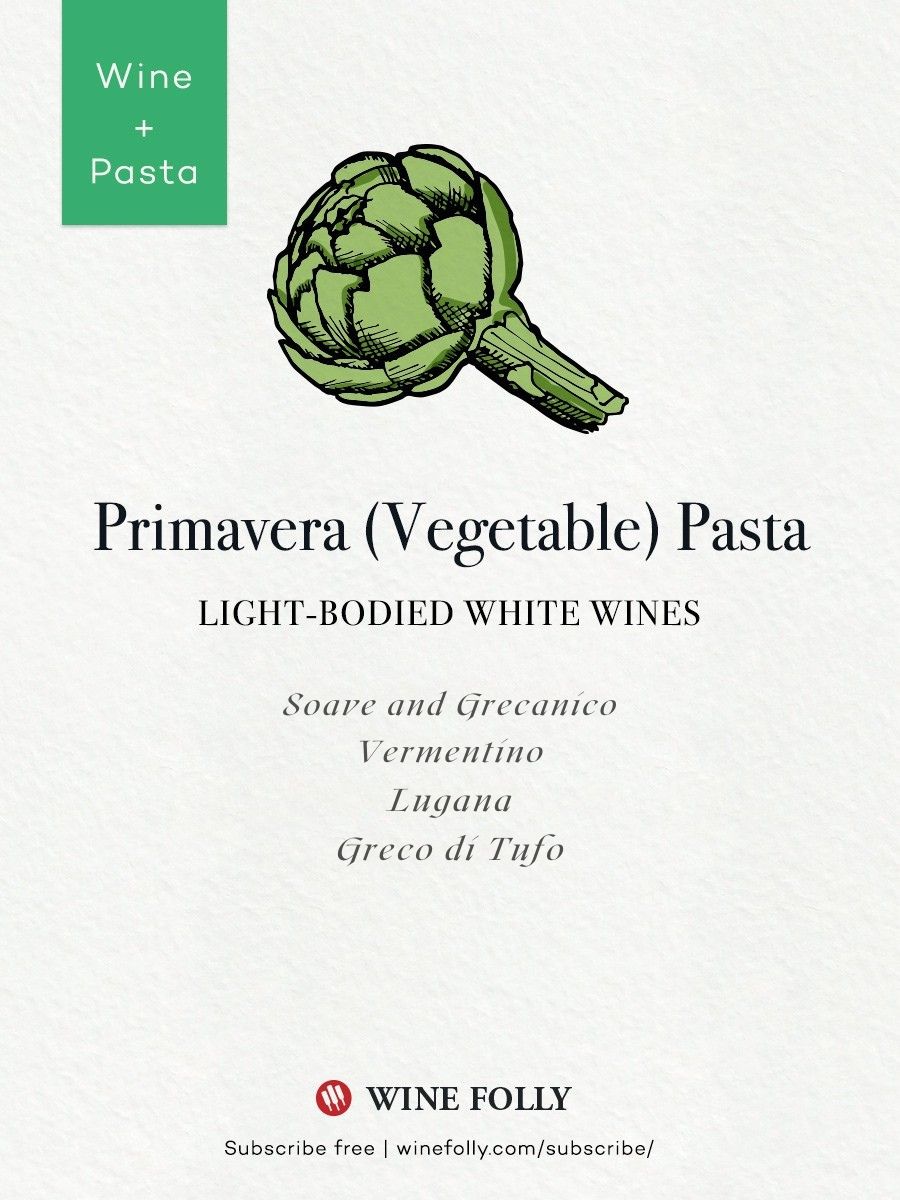
A primavera’s backbone often comes from spring onions, garlic ramps, artichoke, and broccolini, though really, any fresh, seasonal vegetables can shine. The trick is to let the vibrant, springy flavors of the veggies take center stage, which is why a light, lemony, floral white wine works so well. And because a good primavera packs a punch in vegetable intensity, your wine should have enough savory character to keep up. Here are a few examples to get you started:
Soave (aka Grecanico), Vermentino, Lugana (aka Turbiana), Greco di Tufo, Sauvignon Blanc, and Gros Manseng.
The only curveball? Toss tomatoes into your primavera. Suddenly, that light, lemony white won’t cut it, and you’ll want to follow the tomato-based pasta pairing rules instead.
Tomato-Based Pasta
Tomato-based sauces are powerful, have high acidity and are often blended with rich, red meats. Tomatoes are high in acidity, so a relatively tart, medium-bodied red works best. As much as this sounds limiting, there are a ton of different grape varieties (and blends) that will happily fill this role. As you add more richness (meat or cream), you can increase the body, but keep the fresh acidity! Here are a few examples:
Primitivo (aka Zinfandel), Montepulciano d’Abruzzo, Sangiovese (Chianti, etc.), Cannonau, Negroamaro, Nero d’Avola, and Rhône Blends.
Recipe Pairings
- Strozzapreti With Roasted Tomatoes and Primitivo
- With sweet cherry tomatoes and fun-to-eat rolled noodles this Strozzapreti recipe would be awesome with Primitivo. Primitivo is the same grape as Zinfandel, but the Italian version generally has a slightly softer taste profile with more savory-focused aromas. Perfect.
- Rigatoni with Ragù Barese and Salice Salentino
- This recipe has big rigatoni noodles and makes us drool for the wines of Salice Salentino. Salice Salentino is an affordable red blend that hails from Puglia, made with Negroamaro grapes (along with a little bit of Malvasia Nera thrown in). Negroamaro (“bitter black”) has more richness and tannin than Primitivo and will pair better with red meat.
Cheese Pasta
It’s hard to find a wine that won’t pair fairly well with cheese, so instead, think of this pasta style as an opportunity to try some of the more texture-based, nuanced pairings. For example, a white wine with some creaminess, such as an oak-aged Italian Trebbiano or Chardonnay, will create a congruent pairing and highlight the creaminess in the cheese (think ricotta!). Additionally, lighter, more floral red wines are another awesome pairing partner with tart, intense hard cheese pasta, especially if mushrooms or root vegetables are involved in the sauce. Here are a few options to try:
White: Lugana, Sicilian Chardonnay, or Ribolla Gialla.
Red: Langhe Nebbiolo, Nerello Mascalese, Pinot Noir (or Italian Pinot Nero from Oltrepo Pavese), or Sangiovese.
Recipe Pairings
- Tonnarelli Cacio e Pepe and Montefalco Rosso
- The most simple recipes are often the most classic; Cacio e Pepe is just black pepper, Pecorino cheese, and olive oil. The black pepper in this dish bumps up the intensity factor, making this pasta ideal for Italy’s most iconic grape variety: Sangiovese. A Tuscan Chianti would do nicely, but we like the neighboring region of Umbria. Their Montefalco Rosso is also primarily Sangiovese, combined with the truly local Sagrantino, which has a deep, herbal, and savory flavor, as well as powerful structure. It’s a local specialty that tends to deliver more body and ripe fruit characteristics (along with ample tannin).
Seafood Pasta
If you look up great coastal Italian recipes, you’ll discover that many contain some anchovies, clams, or some sort of seafood. Being surrounded by the Mediterranean is an essential part of coastal Italian cooking. Perhaps this is why the Italians make such deliciously lean, acidity-driven white wines, often with a sense of refreshing bitterness. Naturally, lean to medium-bodied white wines are the way to go for most seafood-based pastas, unless there is also tomato involved, in which case you’ll want to consider a rosato (Italian rosé). Here are a few top picks:
Pinot Grigio, Verdicchio, Vernaccia, Picpoul de Pinet (from France), Grenache Blanc, and Muscadet.
Pesto Pasta
While most of us are familiar with the “classic” pine nut and basil pesto, you can make pesto with whatever greens and nut pairing you desire: basil-walnut, parsley-pistachio, peanut-cilantro, hazelnut-mint… You get the idea. The real trick to matching these different pestos with wine is simply acknowledging that the green is the centerpiece of the dish. As soon as you do, whatever wine you choose (be it red, white, or bubbly) should in some way be a harmonious, congruent pairing with the green. For the most part, you’ll find that herbaceous wines (like Sauvignon Blanc) are best suited. Of course, there are many amazing savory, herb-driven wines out there, so don’t let this list hamper your creativity. Here are some examples to get you thinking:
Fiano d’Avellino, Friuli Sauvignon Blanc, Vermentino, Gavi, Grillo, Catarratto, Picpoul de Pinet, or Grüner Veltliner.
- Orecchiette Kale Pesto and Fiano di Avellino
- Your kale has never tasted so deliciously aromatic as it does when it’s processed with fresh lemon, parmesan, almond, and olive oil into an amazing pesto. With a focus on lemons and freshness, a perfect wine for this dish is a young, smoky Fiano di Avellino

